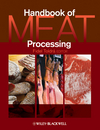New slicers are removing the need for human labor, so long as companies are willing or able to invest in them.
“With labor rates increasing across the country, processors are looking at ways to save, and these machines offer a profitable way to cut labor,” says Chris Fuller, president of Fuller Consulting, a San Diego-based red meat advisory firm.
Slicing machines can dramatically increase a processor’s throughput. “There are some great slicers out there that can slice extremely thin, and some cutters that will portion meat and steaks with great accuracy — both using advanced software and programming to be both user-friendly and profitable,” Fuller says. “Also, the yield is good, sometimes better than a human butcher.”
The variety of cuts that can be made by a cutter is always growing with developing technologies. “The latest software can allow processors to program various sizes and cuts from a single piece of meat, utilizing the whole sub-primal cut to its fullest potential,” says Fuller. “This helps to minimize waste and improve merchandising options.”
There is more innovation overall across the platform. The innovation is driven by established slicer vendors introducing machines with new features as well as new vendors getting involved in the slicing space.
“We’re also seeing more ‘smart slicers’ that include innovations like automatic weight control and slice thickness adjustment based on real-time feedback from vision systems or weight checkers,” says Phil Gerbaulet-Vanasse, director of engineering at Land O’Frost, based in Chicago. “A few other major drivers of change include hygienic design; quick, toolless changeovers and ease of breakdown and reassembly in and out of sanitation mode.”
For example, before an item such as a pork belly or beef ribeye is about to be sliced, it can be scanned by a smart slicer. Its slice weight and/or thickness is then calculated and adjusted by the slicer to maximize the usable premium slices, says Dennis Burson, professor, meat extension & food safety specialist, University of Nebraska-Lincoln.
Blade technology continues to advance with features including longer blade life and better cutting performance at higher blade speeds. “Some OEMs have also introduced advanced blade sharpening and honing systems, which increase blade life and longer runtime between sharpening,” says Gerbaulet-Vanasse.
Keeping the machines in top shape, including sharpening blades and lubricating according to recommended schedules, will help to get the most profit from processors’ investment in this technology.
“If an operator neglects the equipment, the value of the machine will decline,” Fuller says. “Product yields, maintenance and repair costs and employee safety all come into consideration when talking about upkeep (preventive maintenance).”
Preventive maintenance programs ensure blades are sharpened, so blade fragments don’t fall off into the meat, says Monica Smith, food safety, quality and product development consultant with Whole Brain Consulting, based in Loveland, Colo.
“Sharper blades prevent a piece of meat from coming through the line and shredding (dull) equipment or grinders,” she says. “USDA inspectors can only help keep companies accountable and assist them with any equipment concerns.”
Utilizing digital scales, conveyors, chilling/freezing units and mechanized portion separators are just some of the ways operators can increase automation in conjunction with slicers, dicers and cutters.
“Again, as labor rates increase, processors will be looking for ways to invest in robotics and machines to replace workers,” Fuller says. “And, with the ever-improving technology and software, these investments can really increase profits through improved throughput, increased yields and improvements in food safety.”
Food safety can only improve with less of a human touch. “Sanitary design as well as better control and oversight for foreign-material contamination are two ways that these pieces of equipment can improve the overall food safety record of an operation,” Fuller says. “Both benefits are a result of decreased product handling.”
Less human involvement results in greater processing speed, efficiency and reduced errors, Smith says. “Robotic automation can lead to improved throughput and sanitation, as well,” she says. “Less human involvement lowers the risk of contamination.”
Equipment design should facilitate an easier cleaning method, too. “A smooth, impervious surface like stainless steel will still need to be cleaned of course, but it’s made to be easily cleaned,” Smith says.
Sanitary design is driving innovation and improvement in slicing.
“Open design, toolless blade changes and easier breakdown for sanitation are all updates that we’re seeing,”says Gerbaulet-Vanasse. “Robotic loading of loose, fluffed or shingled product into the packaging machine has also improved greatly. The cost for this type of automation continues to drop, which can reduce product touches and cost, as well as ergonomic issues associated with manually loading product.”
Cost is always a factor when processors weigh whether to invest in new equipment, and the same holds true for slicers, dicers and cutting machines.
“Each year, we budget money for a new horizontal slicer, which would help us increase efficiencies for certain kinds of accounts, but we’re waiting to purchase one until we see more advancements with bone-in cutting,” says Jessica Roosa, president, This Old Farm, based in Colfax, Ind. “The challenge is always when to justify a new equipment purchase.”
Any new slicer has to be easy to clean, maintain and quick to train others on, she says. “When my staff looked at new vertical slicers, they appreciated that they were trained in one day to use them,” Roosa says. “It makes the machine more valuable.”
While new equipment becomes more mechanized, there will always be a need for standard equipment that requires trained employees.
“From my perspective, what’s keeping us from more mechanization is that 75 percent of our business is co-packing for others,” she says. “They need traceability, so that limits mechanization because we have to limit our lot sizes; however, we’d love to have accounts that justify more automation.”
Smart slicers and employees are always a good combination. NP











